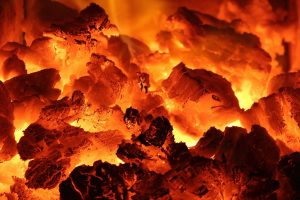
Command Aharon and his sons, saying, “This is the Torah of the olah. It is the olah that stays on the flame on the altar…[2]
Ramban explains that when a person brings a korban to the beis hamikdosh, he should view what is happening to the animal as what deserves to happen to himself as punishment for his sin. He implies that the lesson that the person internalizes is central to the korban. This is nicely alluded to in our pasuk, which can be read, “The Torah of the olah – it is the olah!” The mussar that emerges (olah = rises up, emerges) – that is the true olah!
Let’s examine some of the takeaway from the Torah’s description of this korban.
“Command Aharon and his sons.” Rashi, citing R. Shimon,[3] explains that a special command was necessitated for this parsha, because it imposed a loss upon the kohanim. They needed extra prodding and encouragement to be fully committed to this avodah. While the simple explanation of this loss is the time spent away from their “civilian” jobs with very little compensation, the Chasam Sofer saw something more in it. The kohanim are instructed[4] to “raise up” some of the ashes of the burnt olah, and to bring them near to the altar. The kohanim were told, said the Chasam Sofer, not to keep their spiritual privilege to themselves, but to use their position to bring enlightenment to the people, and to raise them up, including bringing the sinners near the altar, i.e. to repentance. Kohanim might easily balk at this. Dealing with the “ashes” of the nation – the Jews on the lowest spiritual plane – is time-intensive work. It can appear to be unrewarding when their overtures fail. It takes valuable time away from their own spiritual progress. In other words, the kohanim may see the task as causing them a loss. Hashem tells Moshe to provide them with special encouragement and motivation.
Alternatively, the Jewish people are collectively called “olah,” in the manner of “How worthy she is who rises from the wilderness, clinging to her Beloved.”[5] Beset with unending persecution and tragedy, the Jewish people have offered themselves up on countless altars. Yet, they continue to elevate themselves! The Torah therefore stresses, “This is the Torah of My olah-nation” – this is the nature of My people! They stay strong and committed despite the consuming fire of pain and suffering that they are interminably subject to.
This adds another dimension to the practice in the beis hamikdosh of surrounding the altar during Sukkos with large branches of aravah. Those branches were stood up vertically, while their tips drooped down over the mizbeach. The intent of the practice was to arouse Divine mercy for His people. The aravah is the symbol of the seemingly failed Jew, the one without the distinction of taste or stature possessed by the other species taken with the esrog. Even this empty Jew inclines towards the altar. When put to the test, he offers himself up as a sacrifice to Hashem.
- Based on Chidushei R. Yosef Nechemia (Kornitzer) (1880-1933), Rav of Krakow ↑
- Vayikra 6:2 ↑
- Kiddushin 29a ↑
- Vayikra 6:3 ↑
- Shir HaShirim 8:5 ↑


